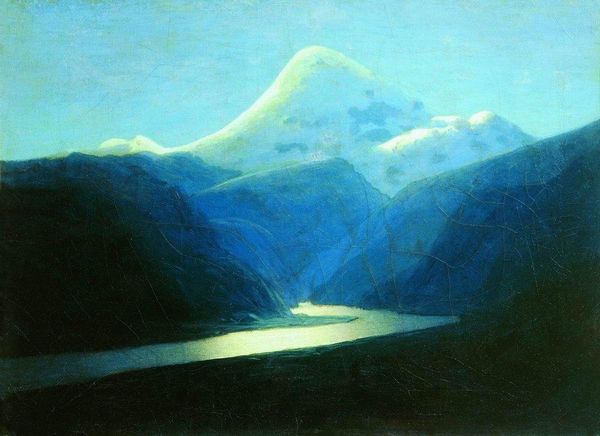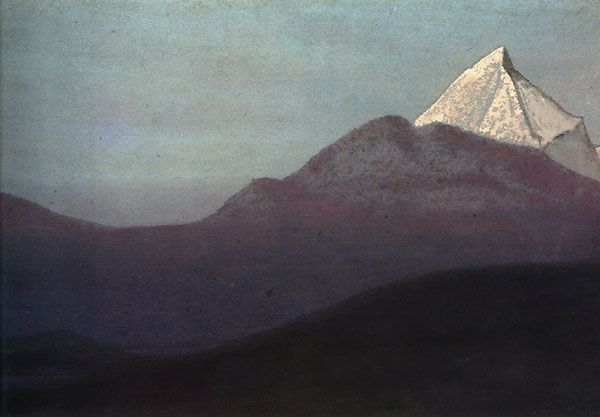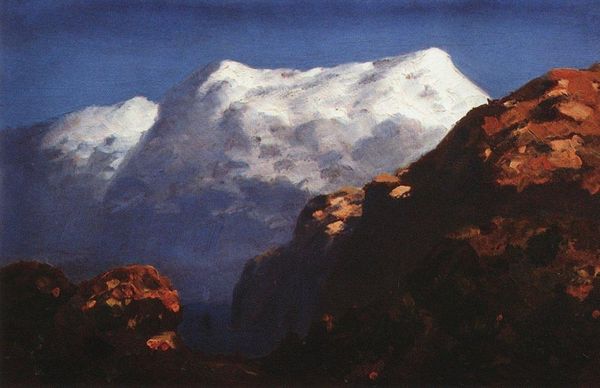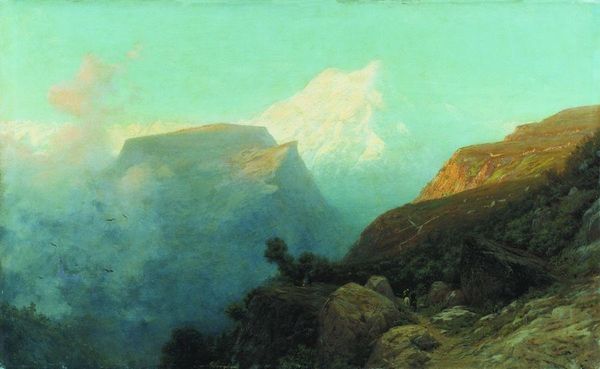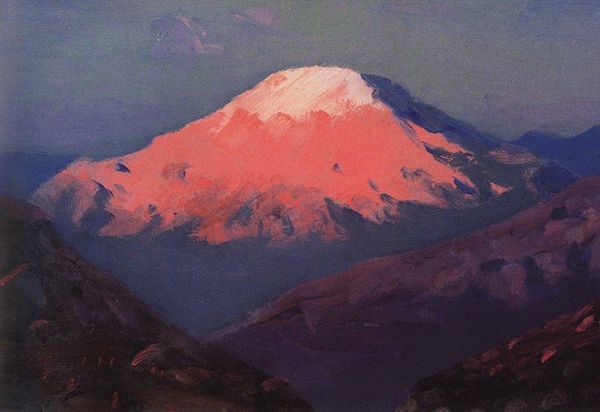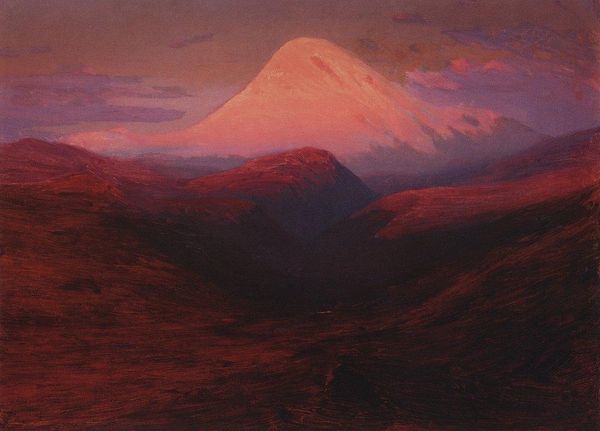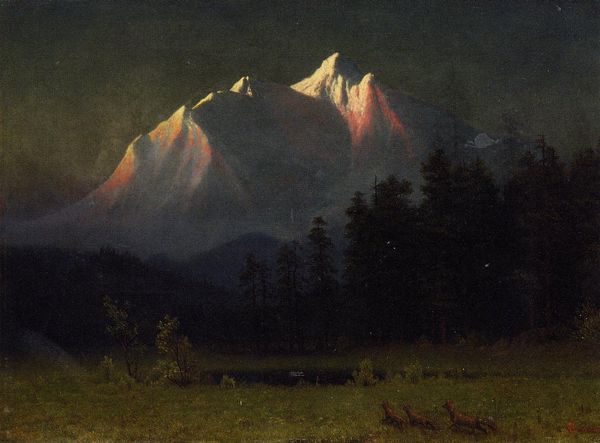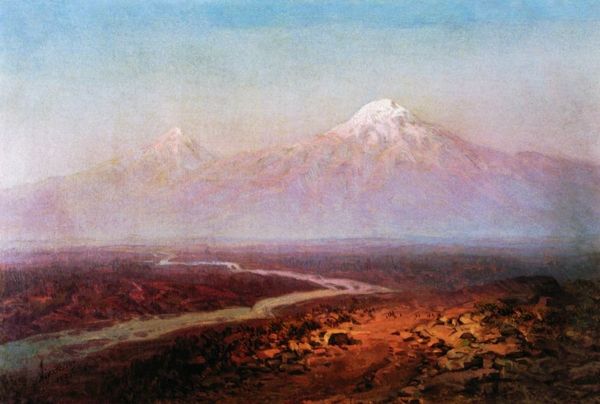
Dimensions: 36.5 x 55.4 cm
Copyright: Public domain
Editor: This is "Elbrus. Moonlit Night" painted by Arkhyp Kuindzhi around 1895, rendered in oil paint. The peak glows almost ethereally against the inky sky. What strikes me is how intensely illuminated the mountain appears, like a beacon in the night. How do you interpret this work? Curator: What’s particularly compelling about this piece is to consider Kuindzhi's unique process. The very facture of the painting – the materials and their application – become a significant element. The luminosity isn’t just representational; it’s actually built into the paint layers. Think about the chemical compositions he might have been experimenting with to achieve this. Editor: Chemical compositions? So, more than just skilled brushwork? Curator: Exactly. The source and processing of those pigments become key. Where were they mined? How were they refined? Was there any industrial advancement or global trade involved that helped make these hues possible? This piece demonstrates an interesting exchange of labor and resources. Consider what social conditions allow for the creation, and subsequent enjoyment, of such an object. Editor: That's fascinating. I hadn't thought about the socioeconomic elements embedded within the paint itself. The very possibility of that glowing peak is a story of labor. Curator: And consider its intended audience. Who were the consumers of this imagery? What did this luminous mountain represent for them culturally and socially? Editor: This gives me a whole new way to think about landscape painting, less about picturesque beauty and more about material reality. Curator: Absolutely! By examining the “how” and “why” of its production, we can better understand not only the art object, but also the world that created it.
Comments
No comments
Be the first to comment and join the conversation on the ultimate creative platform.
